- Community
- News and announcements
News and Announcements
- 70 Announcements

Now you can use Sonos Voice Control with Spotify
Now Sonos Voice Control (SVC) supports Spotify. You can control playback from Spotify from the Sonos app, via direct control from the Spotify app, and with voice commands using SVC. SVC will support Spotify Free as well as Spotify Premium accounts. If you are using Spotify Free, you won't be able to play individual songs. Rather, you can select an album or a playlist and shuffle the songs in it. With Spotify Premium, SVC will support requests made for Spotify’s tracks, artists or playlists: “Hey Sonos, play ‘Hey Jude’ by the Beatles on Spotify”“Hey Sonos, play ‘Dangerous: the double album’ by Morgan Wallen on Spotify”“Hey Sonos, play ‘’Sunny Day’ playlist on Spotify” You can configure Spotify as the default music service for SVC, then you don't have to specify the music service to play from. Settings -> Services & Voice -> Sonos Voice Control -> Default Service SVC will allow you to like/unlike songs or tracks, add/remove to library, and add to custom playlist: Like “Like this song““Like this album“ Unlike“Unlike this song““Unlike this album“ Add to library“Add this song to my library““Add this album to my library“ Remove from Library“Remove this song from my library““Remove this album from my library“Add to playlist“Add this album to my Workout playlist““Add this playlist to my Workout playlist“ Here you can find a complete list of voice commands supported by SVC.For help with SVC, see our official support pages for SVC.
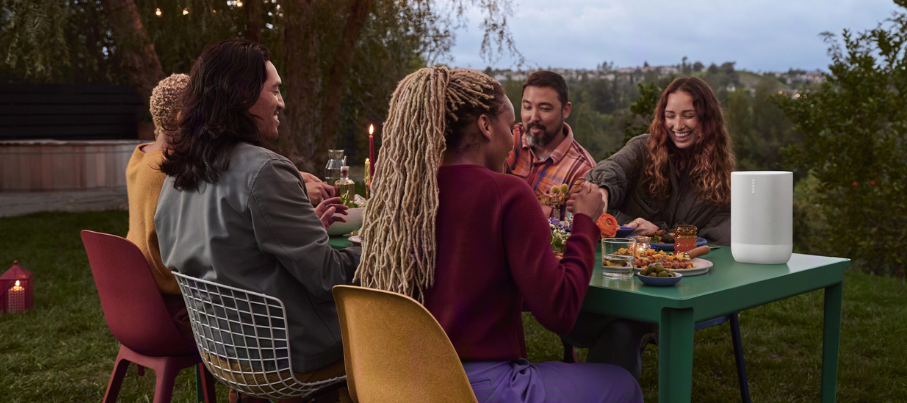
Welcome the new Groups area to the community
Hello, dear community members!We have some exciting news to share with you: We have just launched a new feature that will make your community experience even better: Groups!What is “Groups”?Groups are sub-communities that you can join based on your interests. Groups give you a great opportunity to:Connect and collaborate with other group members who share your interests. Share your tips and tricks. Have you found a great way to do something specific? Share it with the members in the group.How does it work?Groups are available for all community members. You can go to the Groups homepage and click on the Join button. You will then be added to the group as a member. To start with we have created a couple of groups with topics that could be interesting for you.Where can you find it?To get started with Groups, visit our Groups homepage and explore the existing groups. We also added a Groups navigation button to the top menu of the community page..We hope you enjoy Groups! Let us know what you think.
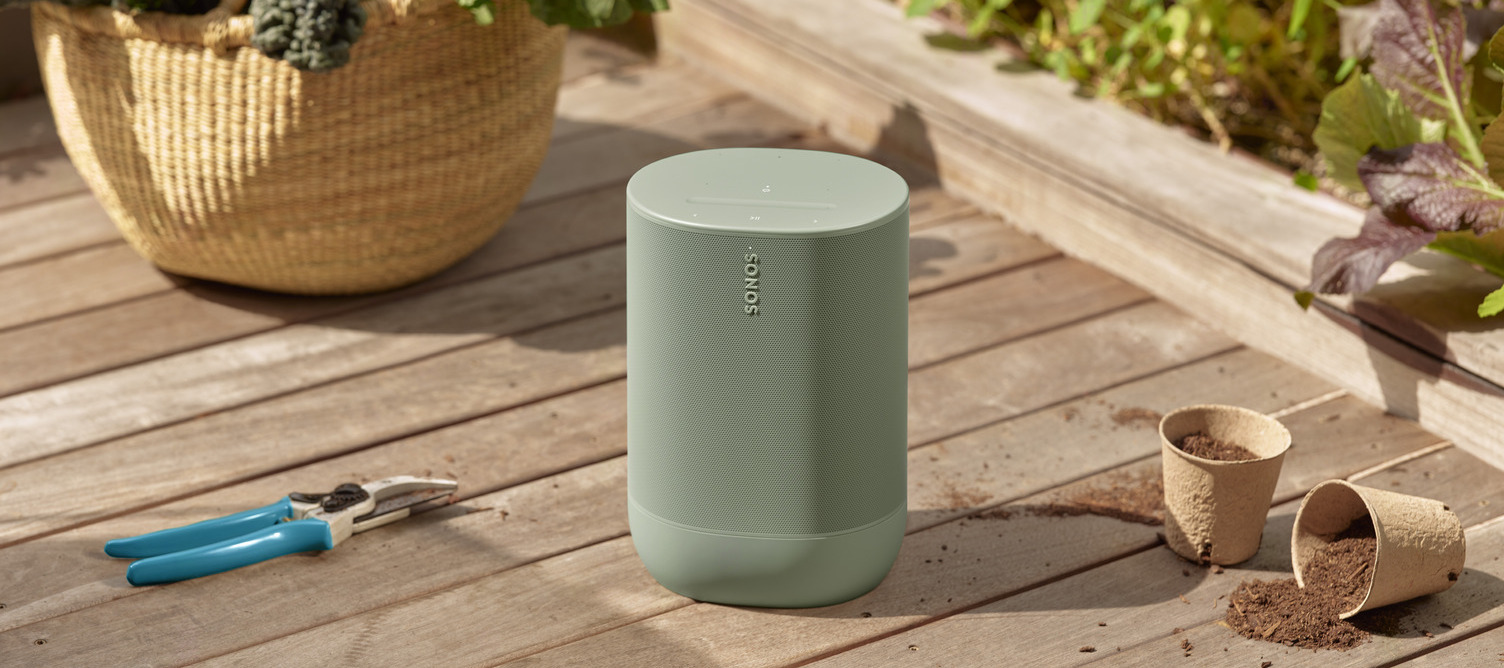
Sonos Introduces Move 2
Hi all,Today we are announcing Move 2, the next generation of our best-selling Move speaker, that delivers spacious stereo sound, up to 24 hours of battery life, and an ultra durable water resistant design that’s ready to party. Packed with sound innovation and sustainable design enhancements, Move 2 is our most sustainable portable product to date and the first to bring stereo sound outdoors.Sonos Move 2 unboxing A Premium Portable Powerhouse That Does It AllMove 2 is upgraded inside and out to include all-new hardware and software with next-gen acoustics that deliver wide stereo sound and deep bass no matter where you’re listening. Supercharged sound, now in stereo: Move 2 comes with a completely overhauled acoustic architecture including dual-tweeters that deliver spacious stereo sound and crisp vocals allowing you to feel the emotional charge of a live performance. Feel the beat from its precision-tuned woofer that produces deep, dynamic bass - even when listening outdoors. Customize your system: Concurrent Bluetooth and WiFi capabilities allow for increased flexibility - stream via Bluetooth to a stereo pair of Move 2 speakers to expand your space or seamlessly group Move 2 with the rest of your Sonos system via Wi-Fi to crank your party up a notch. Sustainably designed to outlast any adventure: Move 2 reduces idle energy usage by more than 40%, incorporates recycled plastics, and uses a removable and replaceable battery to extend its product life - all wrapped in a responsibly designed package that uses sustainably sourced material, zero virgin plastic and is curbside recyclable. More power to you: Move 2 offers up to 24 hours of battery life - double the playback time of the original Move - with a USB-C port that can charge your phone or electronics on the go, making it the perfect companion to power weekend road trips or outdoor gatherings. Sonos Move 2Versatile sound you can move around: With its ultra durable design and IP56 rating, Move 2 is built to withstand accidental drops, splashes, rain, dirt, and sun. With automatic Trueplay tuning, Move 2 continually optimizes the sound for its surroundings, so you’ll always get the best listening experience no matter where life takes you. Elevated design and controls: Move 2 is available in an Olive colorway to complement neutral indoor and outdoor aesthetics, as well as Black and White colorways that blend seamlessly with other Sonos products. Move 2 features the same new intuitive user interface as the recently launched Era products, including a capacitive volume slider for simple control, or use Sonos Voice Control, Amazon Alexa, the Sonos app, Apple AirPlay2 and Bluetooth® to play, pause, check your battery, and more. Connect to all your favorite content: Stream audio using WiFi or Bluetooth, and unlock new listening possibilities by connecting your turntable, computer, or other audio source using the Sonos Move 2.Sonos Move 2Sonos Move 2 will be available globally starting September 20, 2023 for $449 (£449, AU$799, €499). Read the full press release for Move 2 here

Sonos and Amazon expanded access to voice control with Alexa on Sonos devices
Today we are happy to announce that Amazon’s Alexa launched on compatible Sonos devices in additional countries, giving listeners a new and seamless way to control their Sonos speakers using their voice. Alexa will provide more listeners an easy way to play music, set timers and alarms, check the weather, control compatible smart home devices, and more with simple commands.The full list of countries with Alexa on Sonos can be found here.Newly supported countries have access to Alexa International Version, giving listeners simple voice control in English, French, German, Italian, and Spanish.Say it to play it: Enjoy seamless, hands-free control of music and TV content with simple commands like, “Alexa, play jazz music,” or “Alexa, pause the movie.” Alexa International Version is compatible with Amazon Music, Spotify, and TuneIn for music streaming and Amazon Prime Video and Netflix for video streaming. Seize the day: Stay organized with an easy way to set timers and alarms, add events to a shared calendar, adjust a shopping list, get a cookie recipe, and more. Jumpstart your day by asking Alexa to check the weather or share a flash briefing of today’s news. Dial in your home: Create the ideal home environment by controlling your lighting, smart plugs, thermostats, security cameras, and more with your voice.Sonos customers have the ability to choose their preferred voice service for each individual speaker, and even multiple voice services on a single system for compatible devices. Last year, Sonos introduced Sonos Voice Control, a new fast and private way to control music on Sonos speakers, in the United States and France, with additional countries to follow. In collaboration with Amazon to further voice interoperability, Sonos Voice Control is able to work concurrently alongside Alexa.
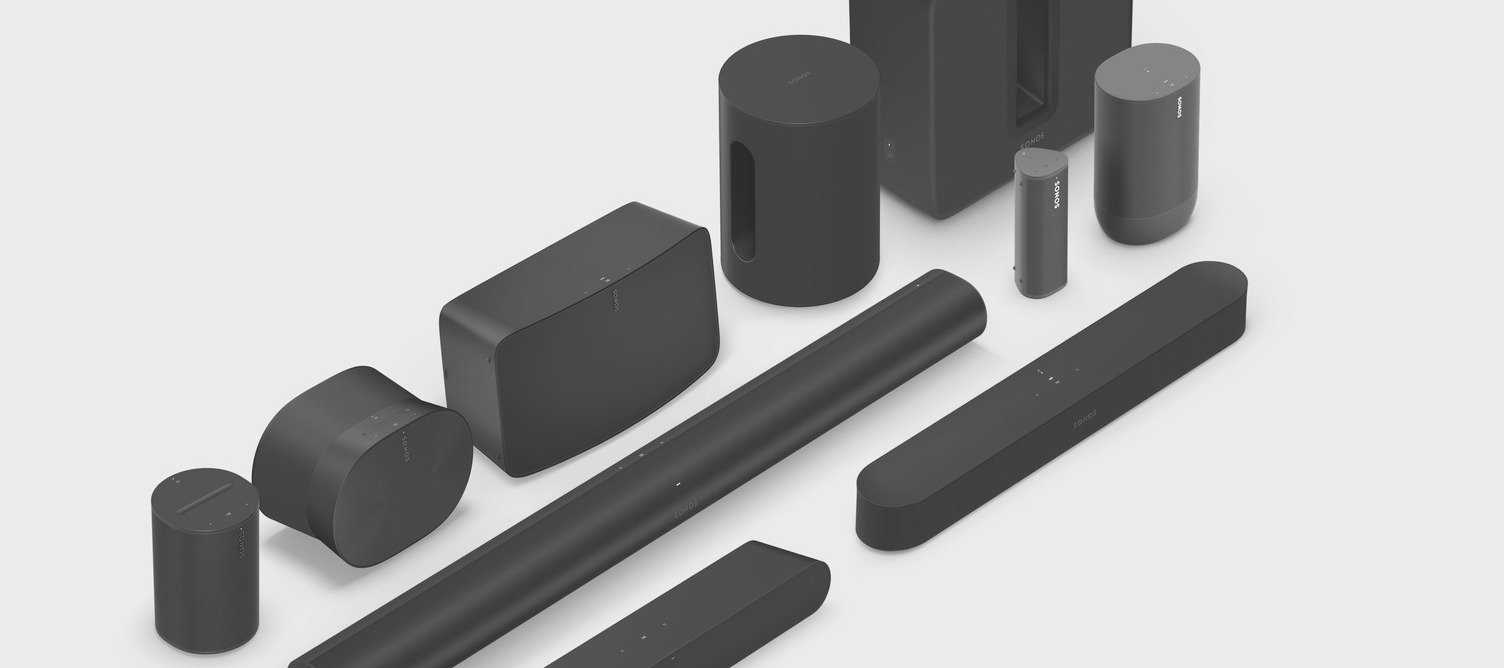
‘On this Device’ for Android controller no longer supported
Starting May 23rd, 2023, the Sonos S1 and S2 controller for Android will no longer support the ‘On this Device’ feature for streaming locally saved audio files directly to Sonos devices.As newer versions of mobile operating systems are released, it can sometimes change the way information is shared between devices, and this feature will no longer be compatible with newer versions of the Android operating system. While this feature will no longer be available in the app, we know local audio files are important to our listeners and we’ll continue to offer other options to enjoy downloaded tracks on Sonos, including: Streaming the catalog from a music service. There are more than 100 music services available on Sonos, many with several millions of songs. See our article on 'Adding music services' to get started.Some music services allow you to upload your own music files to a cloud storage service like YouTube Music for example, which allows for an upload of up to 100,000 files with a free account. Services that allow you to upload files to a cloud storage: YouTube Music Apple Music Deezer Plex Streaming through music services or cloud storage allows you to access your music without your phone. You can play music files from your Android device to a supported Sonos product using Bluetooth.See more about 'Using Bluetooth on Sonos' here. Setting up a Music Library share on a Network Attached Storage (NAS) drive. You’d need to have the drive available in your network when you want to play music, but your library would be easy to transfer to these devices, if it isn’t already on them. See our article on 'Using a NAS drive with Sonos' to get started. If you have a Sonos Play:5, Connect, Connect:Amp, Amp, Era 100 or Era 300 (with the Line-In dongle), you have a Sonos player with a Line-In connection. Using that Line-In, you can play music directly from any device connected to it, to any player around the house. See more about 'Using the Line-In on Sonos' here.We'll continue to support everyone through this change, and will help you through the necessary steps to keep listening to your favorite tracks on Sonos.
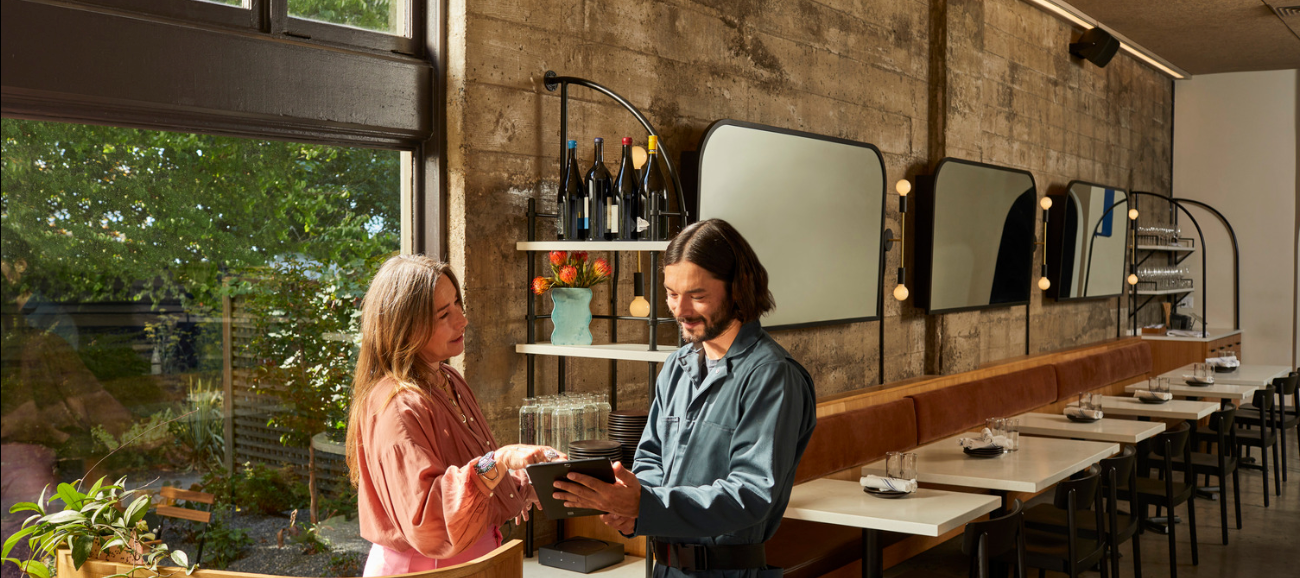
Sonos Expands into Commercial Spaces with Launch of Sonos Pro
Sonos today announced Sonos Pro, a new flexible software as a service (SaaS) offering that makes it easy for businesses to deliver great sound across each of their locations. A new product category for Sonos, the subscription-based offering includes a simple dashboard to remotely manage a system across multiple locations, commercially-licensed music, personalized support, and more. The service works seamlessly with a business’ existing Sonos hardware to fill any space with immersive sound. Sonos Pro is available in the United States starting today, with additional markets to follow. “As consumers return to brick-and-mortar, retail stores and restaurants are leveraging music, visuals and scents to create a sensory in-store experience that builds an emotional connection with customers,” said Patrick Spence, CEO of Sonos. “We’ve seen incredible organic growth for Sonos in commercial spaces as businesses invest in sound solutions to engage customers, which presents a huge opportunity for us. After testing different features in hundreds of business locations to better understand the needs of businesses and the complexities of commercial audio, we’re proud to deliver a simple solution that was designed from the ground up to meet the needs of this audience.” New Sonos Pro controller interface Bring the Sonos Experience to BusinessesSonos uniquely delivers a powerful SaaS offering for businesses alongside its industry-leading hardware. Typical audio solutions for businesses require a complex set of products and tools, but now businesses can streamline their sound with Sonos Pro. Manage and monitor from anywhere: Unlock a bespoke Sonos app experience and remote management capabilities, including a web-based dashboard that allows businesses to view and manage activity across locations. Preset playlist schedules, set administrator permissions, delegate access to trusted employees and access on-demand premium support from anywhere. Set the perfect brand tone: Enjoy exclusive access to Sonos Backgrounds, a commercially-licensed music service featuring a range of music from independent artists, or easily access third-party streaming services like Mood Mix, Soundtrack Your Brand or Rockbot to create a consistent brand experience and engage customers at every location. Experience the best sound in business: Fill each and every location with astonishingly clear, balanced, and detailed Sonos sound with thoughtful hardware design and intuitive control that only Sonos can deliver. Customize and scale systems: Outfit locations with a few compact speakers or a mix of smart speakers and components across multiple locations - because it’s Sonos, all products work together. Expand with more speakers and easily adjust subscription plans as business grows. Sonos Pro is available for $35 / month per location. For more information, visit sonos.com/trades, and follow along on @sonos.
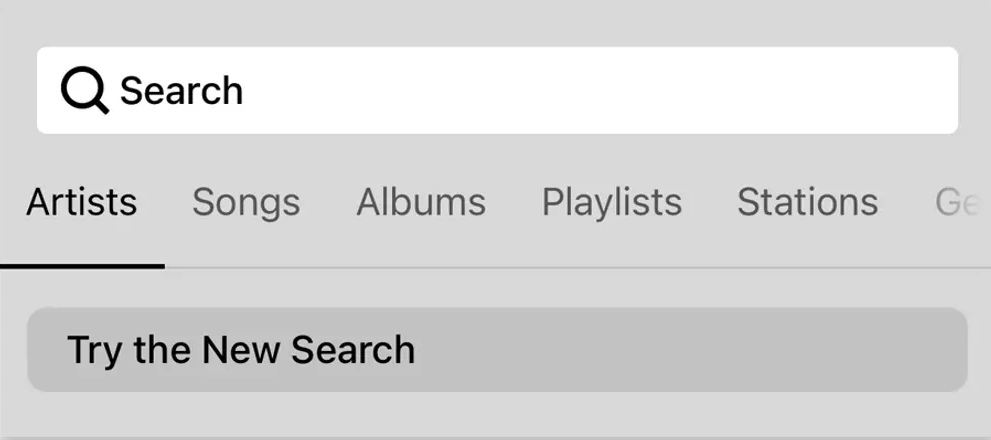
Sonos introduces New Search
Hi all,Last week we started rolling out New Search, a new feature that will make it easier to find content in the Sonos app.What’s New Search?We’re introducing a new single search box that searches across all categories (Artists, Songs, Albums, Playlists etc), to improve your overall search experience. This means that you no longer need to select a category to search in ahead of time. Instead, the search results will be broken down by category, and aggregated across all your content services, which you can easily switch between at the top of the search menu. When performing a search, you will be able to narrow your search results by content service, rather than by category. New Search on SonosTo try New Search, tap on “Try the New Search” in the search menu.New Search will be rolling out to all users over the coming weeks, with all users receiving the feature by 25th April [edited from 18th April].This means that not all of you will have access to New Search right away, but you can expect it soon. Will New Search look through all of my audio sources?New Search does not currently support searching through personal music libraries, “On this Device” (Android) content, or music services with library functionalities. Why is my specific music service not being searched?While the vast majority of content services on Sonos are available in New Search, there are some that are not yet compatible. We’re working with our partners to add more music services to New Search and look forward to rolling these out over time. In the meantime, all music services continue to be compatible with classic search. I liked the classic search option, can I use that instead?You can switch between Classic Search and New Search by navigating to the search menu and tapping the buttons labeled “Switch to Classic Search” and “Try the New Search” respectively. Is Classic Search going away? No, users will continue to have the option to use classic search . Please note: We can’t grant you access to New Search prior to it being available to you. For further information, please see how to switch between New Search and Classic Search.
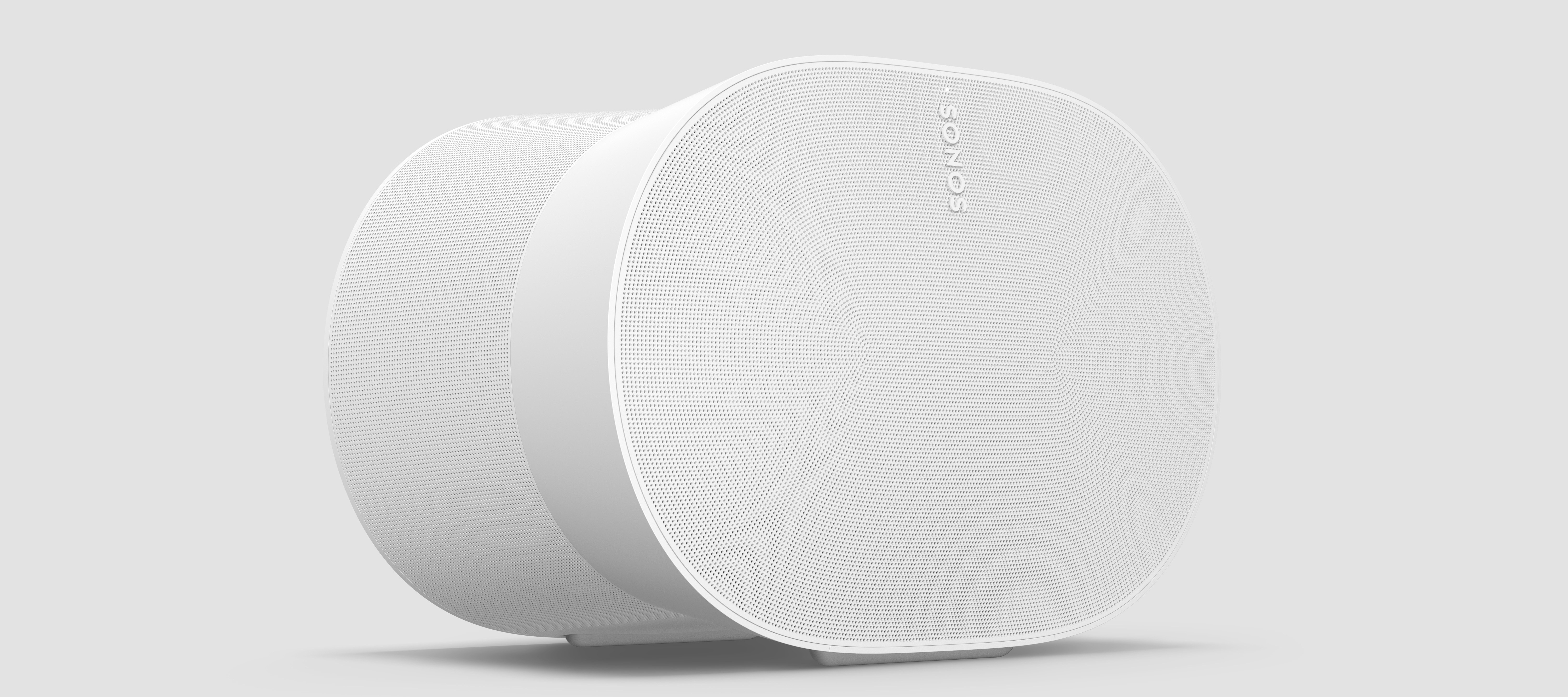
Introducing Era 300
Hi all,Today we introduce Era 300: an unmatched spatial audio experience with Dolby Atmos for listeners and creators alike.Era 300Unprecedented for a single compact speaker, Era 300 boasts six powerful drivers that direct sound left, right, forward and upward, delivering a breakthrough audio performance featuring Dolby Atmos that places listeners at the very heart of their movies and music. Designed for spatial: Era 300 wraps its beautifully complex acoustic architecture in an elegantly cinched hourglass design, with every angle, proportion and perforation enhancing the direction and dispersion of sound to truly surround you. Surreal surround sound: Era 300 is the brand’s first speaker that delivers multi-channel surround sound when used as home theater rears. Movie fans can pair two speakers with Arc or Beam (Gen 2) to create a supercharged Dolby Atmos experience that draws them deeper into the action. Deep music industry collaboration: Sonos worked closely with its community of leading artists and creators - including Sonos Soundboard members - to meticulously fine-tune Era 300 so listeners can enjoy sound straight from the studio that’s true to the artist’s intent. Era 300 from the back Premium, responsible design that keeps everyone in mindBuilding on Sonos’s timeless acoustic-driven design aesthetic, Era 100 and Era 300 are responsive to the challenges facing our environment—and better for everyone who interacts with our designs, featuring a bold new UI and innovations that will help them last longer, use less energy and make use of recycled materials in each product. More sustainable sound: Era 100 and Era 300 are made with post consumer recycled (PCR) plastic and packaged in 100% sustainably sourced paper, while also engineered to reduce power consumption with under two watts idle power consumption and a new advanced sleep function. Built to last: Designed to live in your home for years, both speakers are built for serviceability by reducing the use of adhesives and transitioning to screws for easy disassembly and repair. Bold, new UI: Era 100 and Era 300 feature an intuitive new user interface, including a new capacitive volume slider for simple control that complements quick and private control of your music with Sonos Voice Control, the Sonos app, Apple AirPlay 2 and Bluetooth®. Upgraded connectivity: Stream all the audio you care about using WiFi or Bluetooth, and directly connect other audio devices such as a turntable using an auxiliary cable and the Sonos Line-In Adapter. Expanding Trueplay to more listeners: Using the microphone array in Era 100 and Era 300, Trueplay optimizes the sound for the unique acoustics of your space with just a tap in the Sonos app. Available to both Android and iOS users. Era 300 will be available for pre-order on sonos.com today, and globally starting March 28 2023 for $449USD, £449, €499 and $749 AUS. For more information, please visit Sonos.comRead the full press release for Era 100 and Era 300 here.
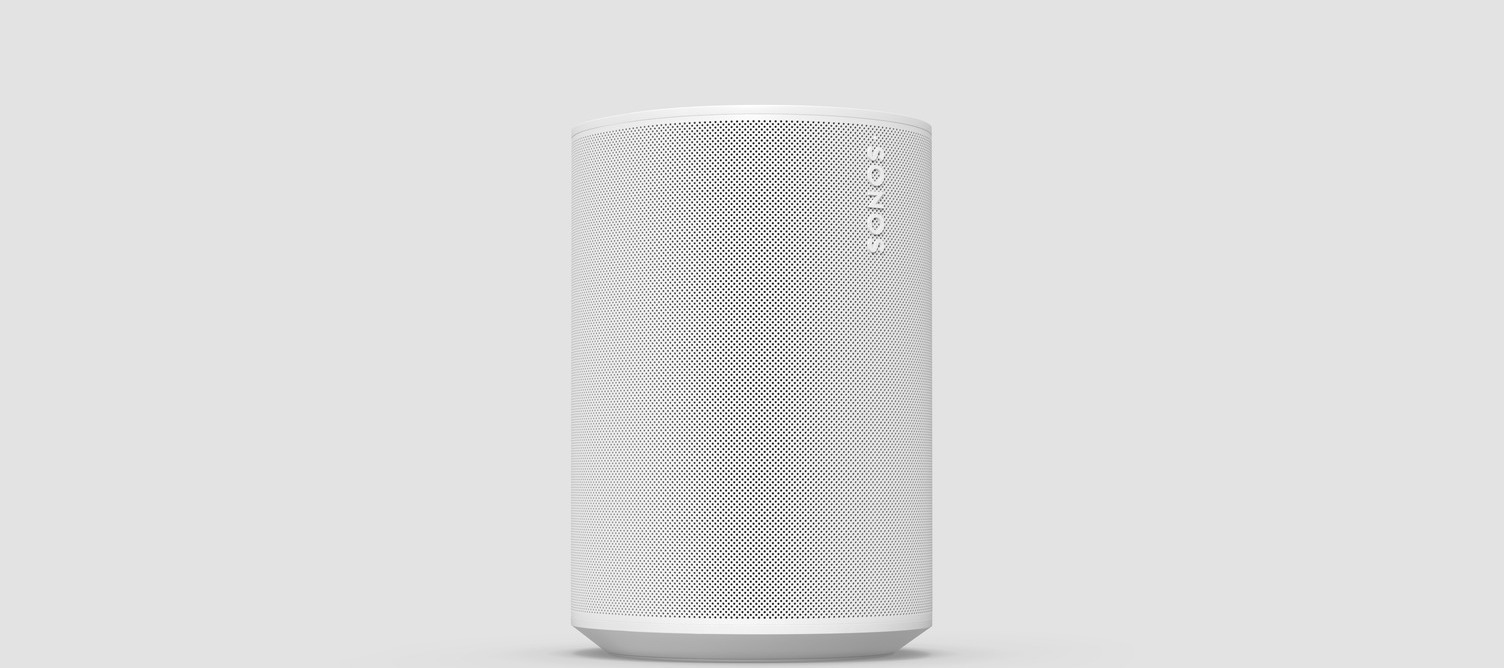
Introducing Era 100
Hi all,Today we introduce Era 100, reinventing a category-leading icon.Sonos Era 100Only slightly larger than its predecessor Sonos One, Era 100 features all-new hardware and software, with next-gen acoustics and design that deliver detailed stereo sound and deep bass. Now in stereo: Two angled tweeters send crisp high frequencies left and right for a rich stereo experience, while a larger midwoofer creates stunning bass that’s unexpected from a single compact speaker. Small but mighty: Packed full of audio and tech enhancements, Era 100’s slim, modern design makes it a chic accent piece for any bookshelf, kitchen counter, desk or nightstand. Customize your system: Level-up movie night by adding two Era 100 speakers as rears with your soundbar to create a surround sound system, or simply pair two together for room-filling stereo sound. Era 100 from the backPremium, responsible design that keeps everyone in mindBuilding on Sonos’s timeless acoustic-driven design aesthetic, Era 100 and Era 300 are responsive to the challenges facing our environment—and better for everyone who interacts with our designs, featuring a bold new UI and innovations that will help them last longer, use less energy and make use of recycled materials in each product. More sustainable sound: Era 100 and Era 300 are made with post consumer recycled (PCR) plastic and packaged in 100% sustainably sourced paper, while also engineered to reduce power consumption with under two watts idle power consumption and a new advanced sleep function. Built to last: Designed to live in your home for years, both speakers are built for serviceability by reducing the use of adhesives and transitioning to screws for easy disassembly and repair. Bold, new UI: Era 100 and Era 300 feature an intuitive new user interface, including a new capacitive volume slider for simple control that complements quick and private control of your music with Sonos Voice Control, the Sonos app, Apple AirPlay 2 and Bluetooth®. Upgraded connectivity: Stream all the audio you care about using WiFi or Bluetooth, and directly connect other audio devices such as a turntable using an auxiliary cable and the Sonos Line-In Adapter. Expanding Trueplay to more listeners: Using the microphone array in Era 100 and Era 300, Trueplay optimizes the sound for the unique acoustics of your space with just a tap in the Sonos app. Available to both Android and iOS users. Era 100 will be available for pre-order on sonos.com today, and globally starting March 28 2023 for $249USD, £249, €279, $399AUD. For more information, please visit Sonos.comRead the full press release for Era 100 and Era 300 here.
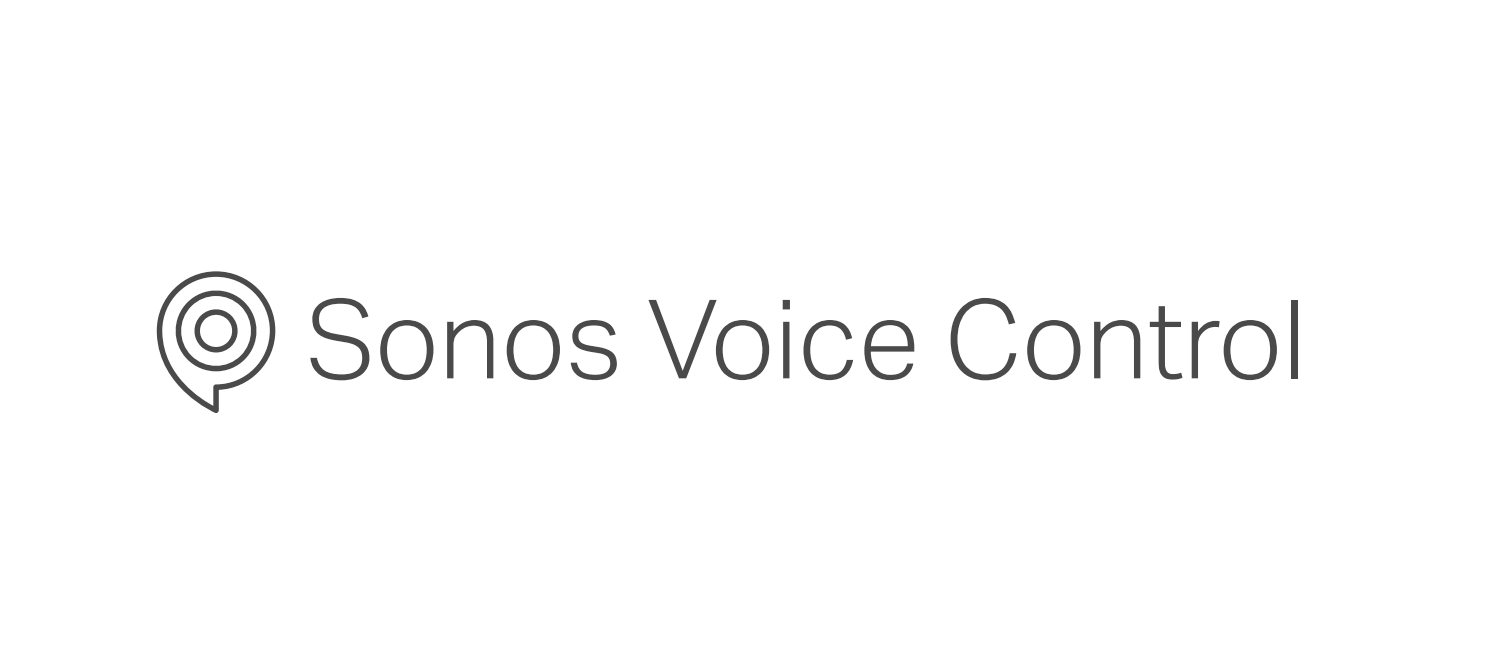
We are introducing Sonos Voice Control version 1.1
On 22 February, Sonos Voice Control version 1.1 launched with a bunch of new features:Sleep timer Timers What kinds of timer commands can you use? Advanced Transport Controls Advanced Search Patterns Sonos Playlist Support Sleep timerThis together with timers is one of our most requested features.The sleep timer will let you put on your favorite tunes to fall asleep to, and also make sure that you don’t have the speaker playing all night long.This is also useful during naptime with the kids, to make sure they have calm music to fall asleep or relax to. All you have to do is say a command like: “Hey Sonos, play Johnny Cash for 20 minutes.” This will start the sleep timer, and you don’t have to worry about it playing all night.TimersWe are happy to introduce this highly requested feature to all of you.The new timer feature can be used for a range of activities, like cooking, exercising, or even a family game night.We have created a chart showing how the timers work: What kinds of timer commands can you use? Setting a timer and stopping the end-of-timer sound. “Hey Sonos, set a timer for three minutes and thirty seconds” *Alarm rings* "Hey Sonos, stop" "Hey Sonos, stop the timer" Setting a timer and stopping the end-of-timer sound from another room. In the bedroom: “Hey Sonos, set a timer for three minutes in the kitchen” *Alarm rings in the kitchen* In the bedroom: “Hey Sonos, stop the timer in the kitchen” *Ring in the kitchen stops* Cancel a timer. “Hey Sonos, cancel my timer” Inquiring about a timer. “Hey Sonos, how much time is left?” Adding more time to a timer. “Hey Sonos, add thirty seconds to my kitchen timer” Removing time from a timer. “Hey Sonos, remove thirty seconds from my kitchen timer” Pausing a timer. “Hey Sonos, pause my timer” Resuming a timer. “Hey Sonos, resume my timer” Note: If you have multiple timers running, your follow-up commands need to specify the room name where your timer is active.Advanced Transport ControlsYou can now rewind or scrub through content to your heart's content!This is especially useful for podcasts if you want to skip segments you have already listened to. All you need to do is specify how much time you want to skip: “Hey Sonos, fast forward 1 minute and 20 seconds.” Or if you missed a great punchline, you can ask: “Hey Sonos, go back 10 seconds.”Another addition is the ability to ask Sonos for the current volume level: “Hey Sonos, what’s the volume level?” So you can now make sure that your home theater setup is set to the correct volume before you start an episode of your favorite TV series. Advanced Search PatternsDive into an artist's discography with a simple voice command. If you find a new artist you like while listening to a playlist, you can now give the following command: “Hey Sonos, play a station by this artist” or “Hey Sonos, play a playlist by this artist.” You can also say, “Hey Sonos, play more songs by this band/artist.”Sonos Voice Control will look for music by that artist in your default music service, and if it does not find it there, it will check if it can find it on your other added services. Sonos Playlist Support You can now use your voice to start streaming your Sonos playlists. Sonos playlists give you a way to save and curate your favorite tracks from any music service into one place for easy access. Sonos Voice Control can start streaming any of your Sonos playlists, regardless of which music services your saved tracks are from.If your Sonos playlist has a similar name as another playlist available within a music service (like “80’s Hits”), Sonos Voice Control will prioritize streaming your personal playlist.If you specifically want for example an Apple Music playlist, you will need to state, “Hey Sonos, play the 80’s hits playlist from Apple Music”. If you have questions about any of these new features or want to share your experience with them, feel free to do so in this thread or in our dedicated Sonos Voice Control discussion area. As always we are ready to assist if you have any issues or questions, and your feedback around these features will be shared with the Sonos Voice Control team.
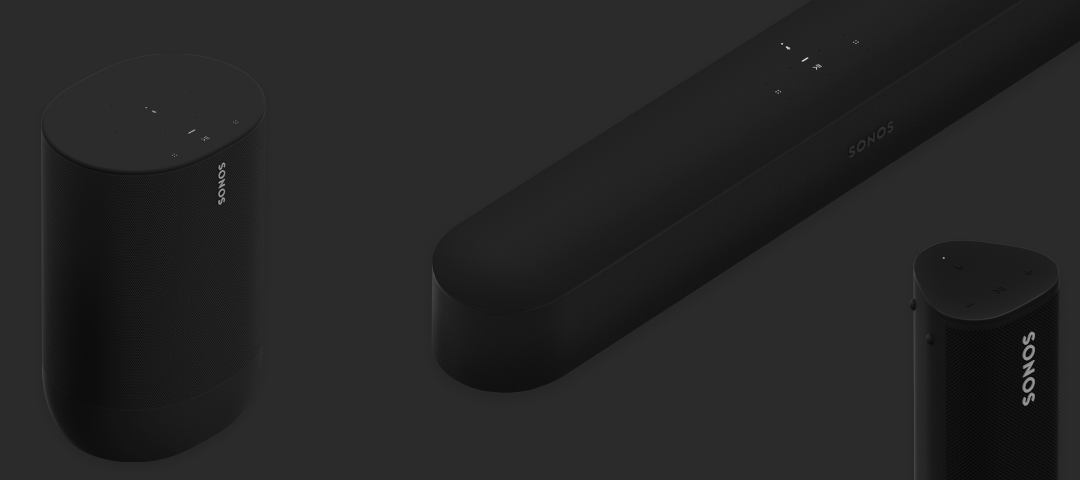
Visual changes and category adjustments to the community coming soon
Hi everybody,Over the next few weeks you’ll start noticing some changes to the community. First we will be changing the category structure to make it easier for you to identify a suitable area to post a question, and/or discover a conversation to join. The category structure on the front page will also be ‘collapsed’ by default to give a better overview of conversation areas.In addition to a new category structure we’ll roll out a new feature called “News and Announcements” where all the content will be displayed chronologically rather than by last reply. After, and a bit during, the category overhaul we’ll be updating the visual aspects of the community: New banner images, new button colors, and a new site menu.In addition to the changes being rolled out shortly, we’re also looking into a few new features to make it easier to find helpful information. First one is ‘recommended topics’ which is a sub category specific feature, where we can highlight helpful topics.While we’re working on the new structure, the visual updates, and moving a lot of content around, the community will be a bit messy. You might have started a topic in a sub category, only to find it has been moved to its new home in a new sub category. You can always find all your content back by looking into your community profile here: Click to see the topics you’ve started. Click to see the comments you’ve written.While we’re doing the changes across the community we won’t be closing the community temporarily, so please bear with us if something isn’t looking quite right. We will of course let you know when we’re done, and we welcome any feedback to the new changes. All the best,Ditte and the Community team

Introducing Sub Mini
Hi all,Today we announce the Sub Mini, the wireless subwoofer that sets a new standard in its category for powerful, balanced bass. Available in matte black and white, Sub Mini will be available globally starting October 6.Sonos Sub Mini Small but Mighty: Sub Mini Boosts Bass Across Movies, Music, Gaming and MoreBass without the Buzzkill: Dual custom woofers and advanced processing generate deep, dynamic low end with no buzz or rattle, helping you feel more immersed in every scene and song. Within the acoustically sealed cabinet, both woofers face inward to create a force-canceling effect that neutralizes distortion. Balanced Sound: Advanced digital signal processing maximizes bass response and reproduces the full-toned low frequencies expected from a much larger subwoofer, allowing paired speakers like Beam, Ray, One, or One SL to focus on more mid-range and high frequencies for a richer, more powerful sound experience all around.Pairs Well With…: Drum up the drama in every movie scene by pairing Beam or Ray with Sub Mini, or drop it even lower on your at-home dance floor by making Sub Mini your Sonos One’s plus one. Looking Great at Every Angle: Unlike other subwoofers, Sub Mini features a round design that allows it to blend naturally into your home aesthetic without taking too much space (or attention). Seamless Set-Up: Add Sub Mini to your Sonos system in just a few taps on the Sonos app, mixing and matching with different Sonos speakers to create your perfect sound system, whether you’re hosting a housewarming party or movie night with friends. You can also fine tune Sub Mini’s sound with Trueplay, which detects and adapts the speaker’s sound for reflections off of walls and furniture, giving you the best listening experience for your room and setup. Sonos Sub MiniBuilding on the award-winning design of Sub, Sub Mini delivers rich, clear low end in a more compact, cylindrical design.Sub Mini will be available globally starting October 6 2022 for $429USD, £429, €499, $699AUD. For more information, please visit Sonos.comRead here the full press release on Sonos Sub Mini.
14.12 Update
Changes to volume mapping and impact on Sub output Thank you for your feedback regarding the recent 14.12 software update with Enhanced Clarity for Arc. In this update, we made a change to Arc’s audio profile to improve dialogue clarity and the overall sound experience. This change is based on feedback from our listeners in the field and brings Arc in line with our other Home Theater products, resulting in a more accurate representation of the sound as intended by the content creator. The updated tuning adjusts the spectral balance of Arc+Sub to achieve a more accurate representation of the sound and an improved sound experience. While the Arc+Sub output capability remains the same, the mapping of volume across the 0-100% range has been adjusted with this release which means low and mid volume levels are relatively lower compared to the previous tuning so you may need to adjust the volume slider to achieve your pre-update volume level. The maximum volume and bass output are unchanged. We acknowledge that this change was not made more clear in the release notes and in the future we’ll be sure to make sure we communicate these rare changes more effectively. Please note, we have identified an issue for some users of Arc, Beam and Ray whose configuration includes a Sub (with or without surrounds), who may find their Sub output is lower than desired after performing a new Trueplay tuning. Users with Beam or Ray bonded with Sub can increase the Sub level for a more powerful low-end response, however this won’t have the same impact for Arc users. Customers using Arc bonded with a Sub (and/or surrounds) who find their Sub output is lower than desired following performing a new Trueplay tuning, should temporarily disable Trueplay on Arc until this is addressed by an upcoming software update. Trueplay tunings for Home Theater configurations without a bonded Sub are unaffected, including standalone soundbars and those bonded with surrounds only. If you would like any assistance adjusting the sound of your Home Theater setup, the community is here to help. You can also contact Sonos support. Moderation edit:With the 14.18 software update, the above mentioned issues have been addressed, and the Enhanced Clarity for Arc adjustments are retained. There was a clear preference within our community for the previous volume settings, and these have been restored. This will be apparent immediately after updating to 14.18. The Trueplay issue has been fixed. Customers who experienced a lower Sub level after performing Trueplay after updating to 14.12 will need to update their systems and then perform a new Trueplay tuning in order to address these improvements in their system. Customers will hear a more powerful low end response, meaning any Sub level adjustments made after 14.12 should no longer be required.
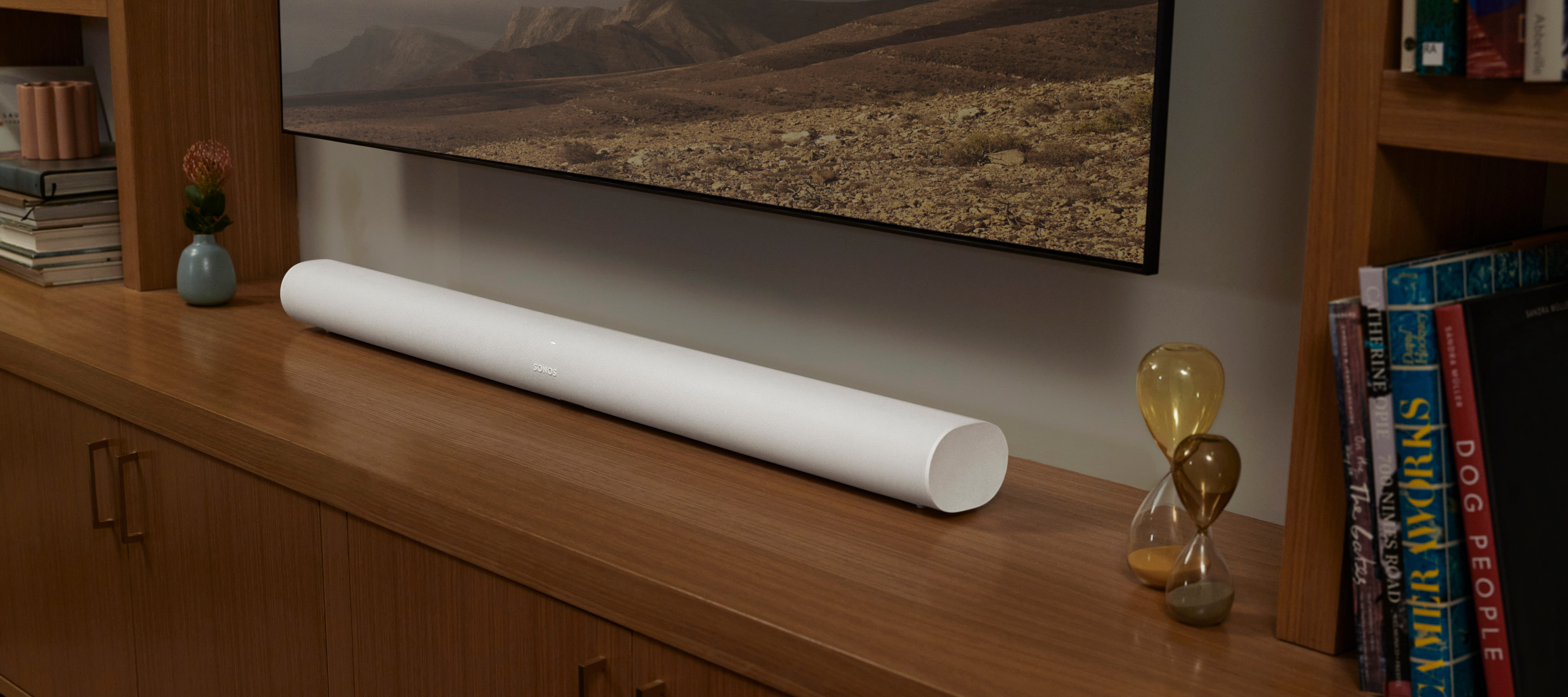
Enhanced Clarity for Arc
Thanks to a recent update, your Sonos Arc now delivers even crisper dialogue and more vivid detail.Arc now features our latest center channel array algorithms that enhances dialogue clarity. This improvement takes effect even when Speech Enhancement is not enabled.You may also notice greater detail in music and TV. We adjusted the speaker’s tuning for different types of content, which enhances overall clarity.Because this update substantially changes how Arc processes and localizes content, previous Trueplay™ settings cannot be applied to this update. After downloading the latest software release, Arc will be updated to its new standard tuning with improved clarity. In order to get the best listening experience in your room, we recommend retuning your Arc with Trueplay™.To get the latest update for Arc, all you’ll need to do is ensure your S2 app and system is up to date. In the Sonos app, go to Settings > System > System Updates > Check for Updates.
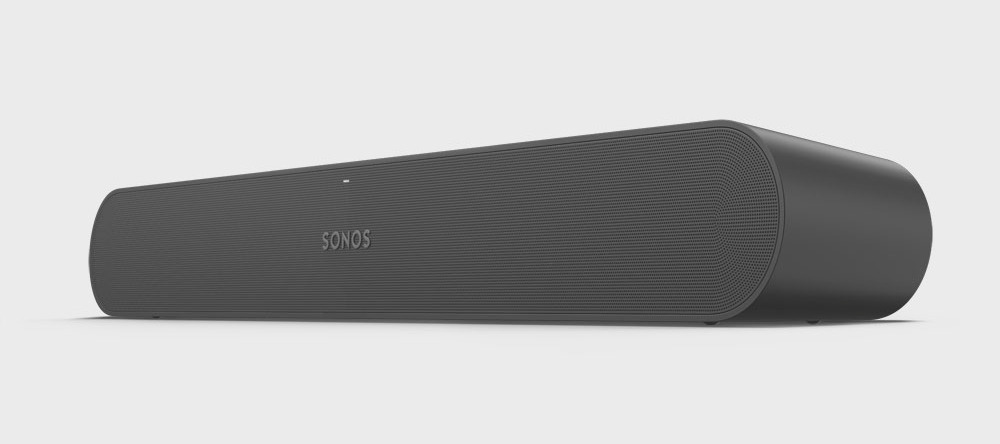
Upgrade Your Sound With Sonos Ray
Hi All,Today we announce Sonos Ray, a compact soundbar with impressive sound for its size.Blockbuster Sound from Sonos RayRay raises the bar for at-home entertainment with new acoustic innovations that deliver balanced sound, crisp dialogue and solid bass. Sonos RayRoom-Filling Sound: Custom-designed waveguides project sound from wall to wall, and advanced processing accurately positions elements throughout your room so you feel like you’re at the center of the story. Precisely Balanced: A new bass reflex system with a proprietary design delivers thrilling lows with perfectly weighted bass, while custom acoustics precisely harmonize mid and high-range frequencies. Tuned to Perfection: Like all Sonos speakers, Ray was tuned with the input of the Sonos Soundboard, a collection of leaders across music, film and more. Fine tune the sound even further with Trueplay to create the ideal listening experience for any room.Enhanced Listening: Sonos’ Speech Enhancement ensures even greater clarity so you never miss a word, while Night Sound reduces the intensity of loud effects so you don't disturb anyone else at home. Compact Design: Whether you’re placing it on your media stand or tucking it inside a credenza, Ray’s understated and impressively compact design blends into any space. Sustainable Sound: Ray also features our most sustainable design packaging to date, with a gift box and protective cushions that are 100% post-consumer recycled paper. Sonos Ray backside Ray brings Sonos' category-leading simplicity and versatility to a more accessible price point, making it easy to build your first home theater setup or expand in more rooms. The new soundbar is compatible with all of your favorite streaming services, so you can enjoy movies, music and more with simple setup and control - just open the Sonos app and start listening in minutes. You can easily control Ray with your existing TV remote, the Sonos app, Apple AirPlay 2 and more. Add a pair of Ones to your home theater setup for surround sound or connect to any Sonos speaker for multi-room listening.Sonos Ray is available globally on June 7, 2022 for $279 USD, €299, £279, $399 AUD / $449 NZD. You can purchase Ray directly from Sonos.com: Sonos RayRead the full press release on Sonos Ray and Roam Colors here.
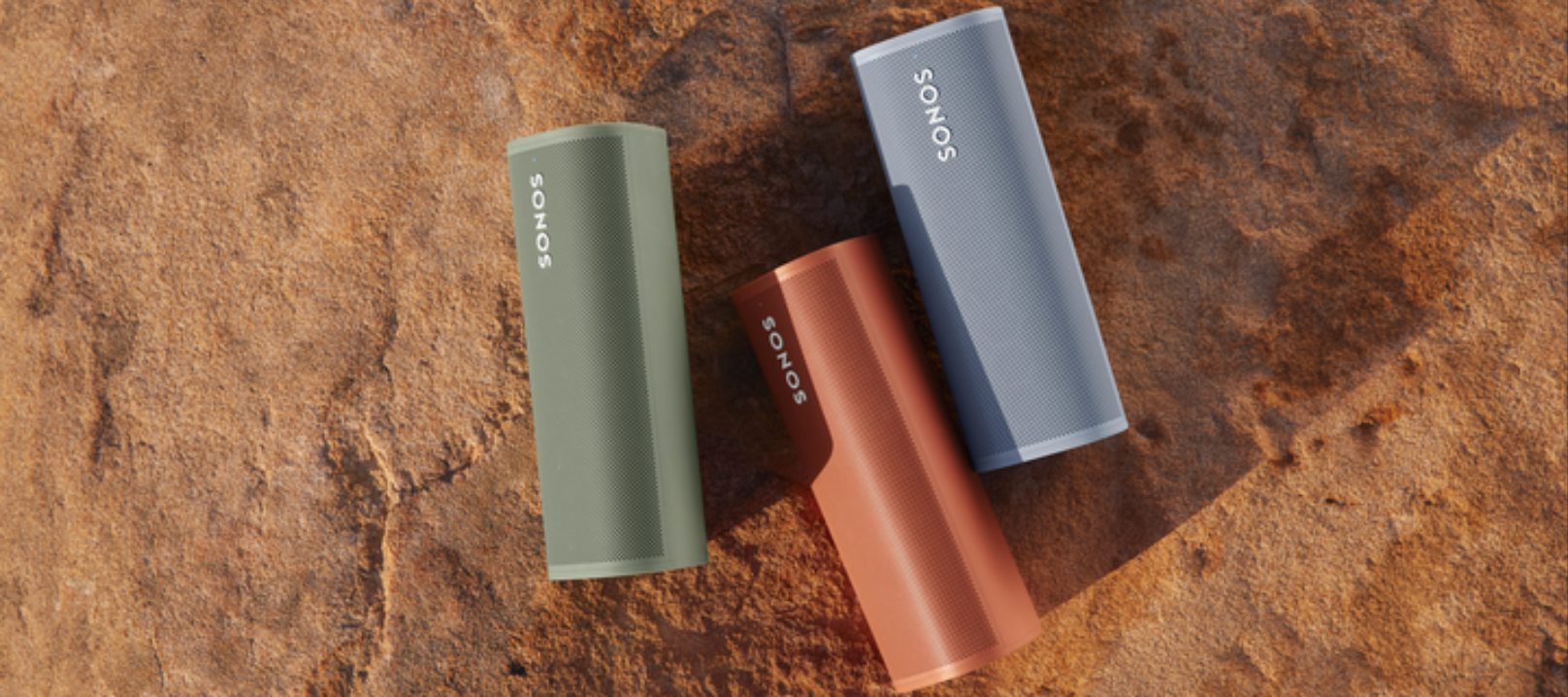
Introducing Roam Colors
Hi all, Today we announce three stylish colors for our ultraportable Bluetooth smart speaker, Sonos Roam.Express Individual Style with New Colors for Sonos Roam: Olive, Wave and SunsetSonos’ ultraportable smart speaker Sonos Roam is now available in three new hues: Olive, Wave and Sunset. Influenced by natural serenity, evening skies and outdoor living, Roam’s new colors are as versatile as the speaker itself, complementing interior and outdoor styles while still harmonizing with the rest of the Sonos system.Olive: Inspired by lush landscapes from desert cacti to pristine park gardens.Wave: Drawing from the serenity of coastal beaches and backyard poolside oases. Sunset: Influenced by painted desert sands and vibrant evening skies.Sonos Roam all five colorsAn ultraportable companion, Roam lets you stream all your favorite content on WiFi and Bluetooth, offering waterproof durability and all-day battery life to keep you connected wherever your curiosity takes you. All three new colorways are available worldwide on May 11, 2022 for $179, £179, €199, $299 AUD / $339 NZD You can read the full press release for the new Roam colors here.
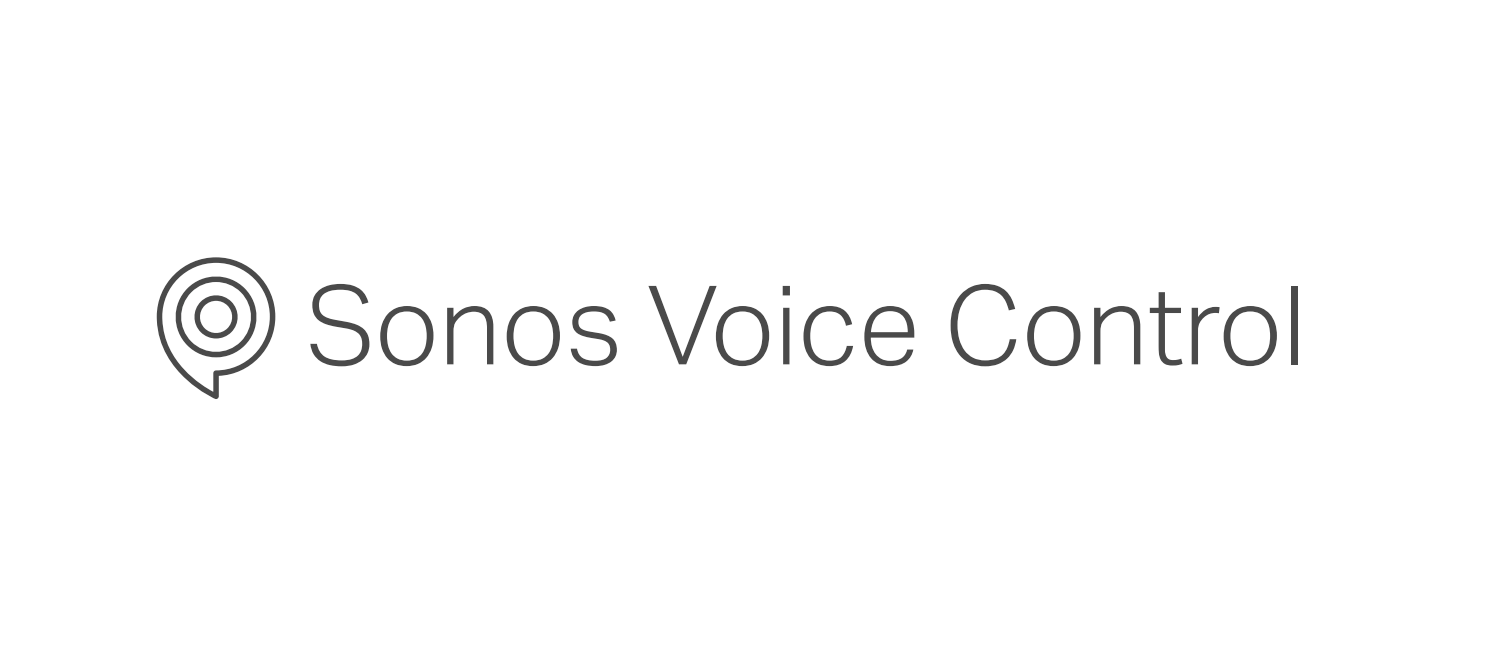
Introducing Sonos Voice Control
Hi Sonos Community members!Today, we introduce the first voice experience created purely for listening on Sonos. Designed with privacy at its core, Sonos Voice Control is the simplest way to control your music, offering complete command of your Sonos system using only your voice. Sonos Voice Control works on every voice-capable Sonos speaker, processing requests entirely on the device. No audio or transcript is sent to the cloud, stored, listened to or read by anyone.Available on new voice capable products and as a free update for existing customers, Sonos Voice Control is compatible with Sonos Radio, Apple Music, Amazon Music, Deezer, and Pandora at launch. More services and markets will follow. Fast, accurate control of your music and your Sonos System Sonos Voice Control finds the music you want to listen to, processing requests entirely on the device. Local processing delivers faster response times, and effortless follow-ups. All you need is one “Hey Sonos” and you can follow up without the need for additional wake-words.Just like the Sonos app, you can control music and speakers in any room, easily move music around the home, save and like your favorite songs to your personal music library and more. Natural conversation with Giancarlo EspositoSonos Voice Control understands the nuance of human communication and will respond to natural commands like “turn it up!”. After a careful search, Sonos chose award-winning actor Giancarlo Esposito - best known for his roles in Breaking Bad, Better Call Saul and The Mandalorian - to deliver a familiar voice for US customers. With careful recording, advanced processing and mastering, the voice is natural, unobtrusive, yet confident and engaging. Sonos’ first voice will be joined by others over time as Sonos continues to expand the experience to new people and places. Sonos Voice Control is available in the US starting June 1 and in France later this year, with additional markets to follow. Read the full press release on Sonos Voice Control here.

Important Update to BBC Live Radio Access
Hi everyone, The BBC has made some changes to the way you can access BBC live radio in the United Kingdom.BBC live radio will not be available through Sonos Radio, or TuneIn in the United Kingdom from Today, 13th April 2022.Find all your favourite BBC radio stations, podcasts and music mixes on BBC Sounds, available on Sonos in the United Kingdom.To keep listening, you can add BBC Sounds to your Sonos system: iOS or Android:Open the Sonos app. From the Settings tab, tap Services & Voice. Under Music & Content, tap Add a Service. Tap on BBC Sounds Tap Add to Sonos. Follow the on-screen instructions to add the music service account.Mac or PC:Open the Sonos app. Under the Select a Music Source section, click on Add Music Services. Click on BBC Sounds Follow the on-screen instructions to add the music service account.Users outside of the United Kingdom will still be able to listen to BBC live radio through Sonos Radio. Cheers,James L.
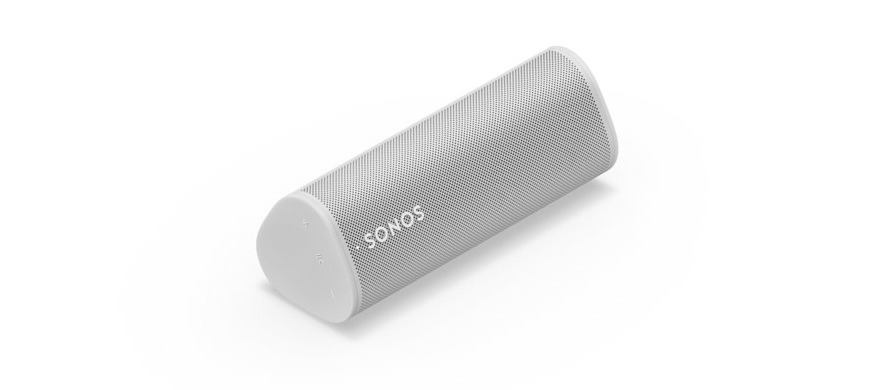
Meet Roam SL
Sonos has always been focused on giving our listeners choice. Today we are introducing Roam SL, the essential ultraportable speaker that offers an even more affordable way to enjoy the Sonos experience anywhere you go. Roam SL offers the same impressive sound for its size, effortless setup and control, and lightweight, durable design as Sonos Roam. Roam SL does not have a microphone, which means it does not support select features including built-in voice control, Automatic Trueplay, or Sound Swap. You can find pricing and availability of Roam SL here. Roam SL is available in most regions. Visit Sonos.com to see if it is available in your area.
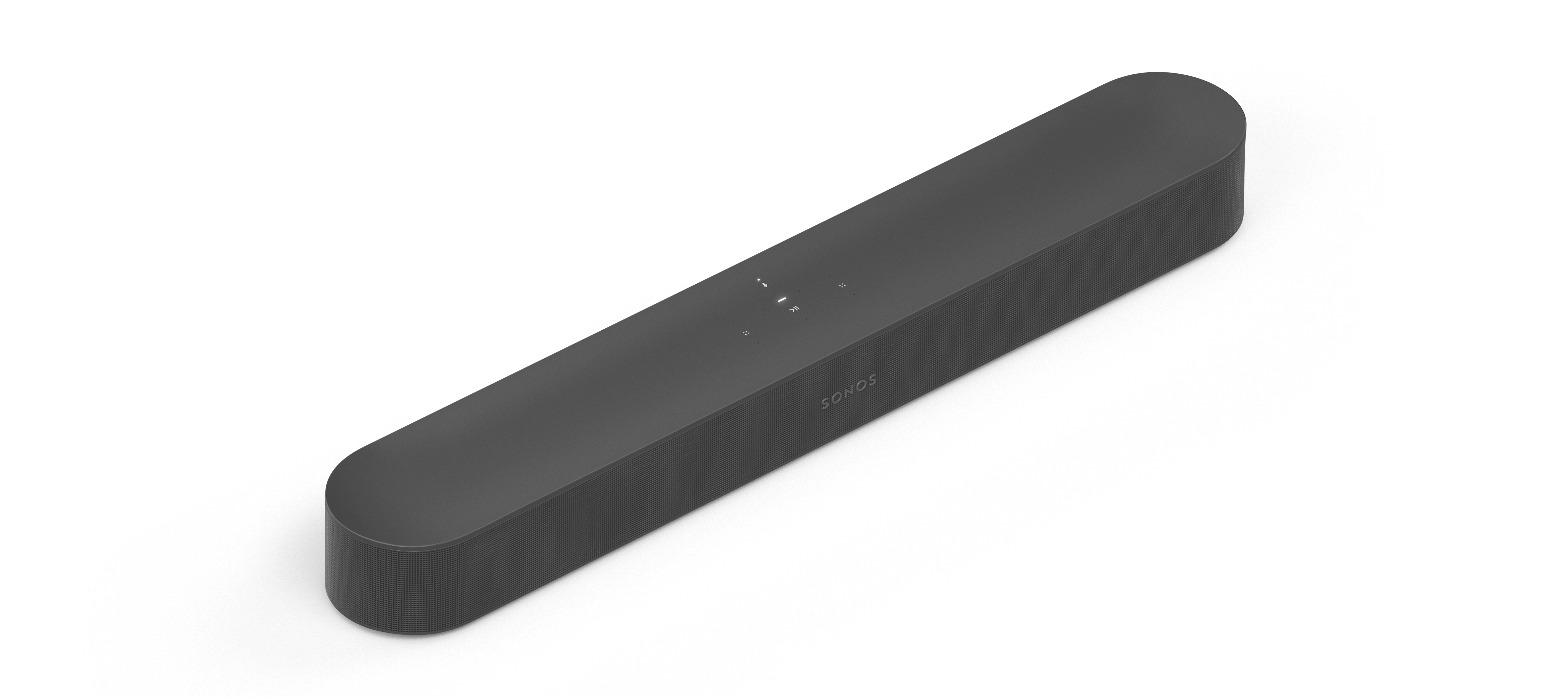
Meet Sonos Beam (Gen 2)
We’re happy to introduce you to Sonos Beam (Gen 2), a new version of our industry-leading compact smart soundbar for TV, music, gaming and more. The new Beam delivers an upgraded, more immersive sound experience with greater depth and clarity, as well as support for Dolby Atmos. Enjoy panoramic sound on the latest generation of Beam, now with support for Dolby AtmosThe new Beam is upgrading the home theater experience. Compatible with more than 100 streaming services available in the Sonos app, you can expect exciting improvements across sound, design and packaging, including:3D Audio with Dolby Atmos: Immersive sound technology that places you in the center of the action, whether it’s experiencing planes as if they were flying overhead, hearing footsteps moving across the room, or feeling the score all around you. Enhanced Sound, Same Size: With more processing power and newly developed phased speaker arrays, Beam steers and localizes sound around the room for a lifelike experience. The speaker is also now compatible with HDMI eARC on your TV, so you can experience your favorite movies and games in even higher definition sound with support for new audio formats.Sleeker Design: An updated polycarbonate grille that’s precisely perforated allows the speaker to sound great and blend seamlessly into your home, just like Sonos Arc. Sonos Beam (Gen 2) Easy, More Secure Set-Up: With just two cables and new NFC capabilities, setup is seamless and will have you listening in minutes. Simply open the Sonos app, follow a few prompts, and tap your phone to Beam. Sustainable Sound: The new Beam features sustainable packaging, including a premium uncoated kraft paper, a gift box made of 97% sustainable paper, and no single use foam. More Ways to Play: Sonos Adds Support for New Services and Audio Formats Launching later this year in select markets, Sonos plans to support Amazon Music’s Ultra High Definition audio, which will allow listeners to hear tracks in lossless audio up to 24-bit / 48kHz on their Sonos speakers, as well as Dolby Atmos Music, an immersive audio format that breaks the boundaries of traditional studio recordings and puts you inside the song, revealing every detail of the music. Available at no extra cost to Amazon Music Unlimited customers in the United States, Canada, United Kingdom, Germany, France, Italy, Spain, and Japan, Ultra HD will be available to listen on all S2 devices, except Play:1, Play:3, Playbase, and Playbar, while Dolby Atmos Music will be available to listen on Arc and Beam (Gen 2). Sonos also plan to add support for decoding DTS Digital Surround later this year via the S2 platform on Playbar, Playbase, Amp, both generations of Beam, and Arc. Sonos Beam (Gen 2) backsideBeam (Gen 2) is available starting October 5th for $449, €499, £449, NOK4999, SEK5349, DKK3749. You can pre-order today on sonos.com.Read the full press release on Sonos Beam (Gen 2) here
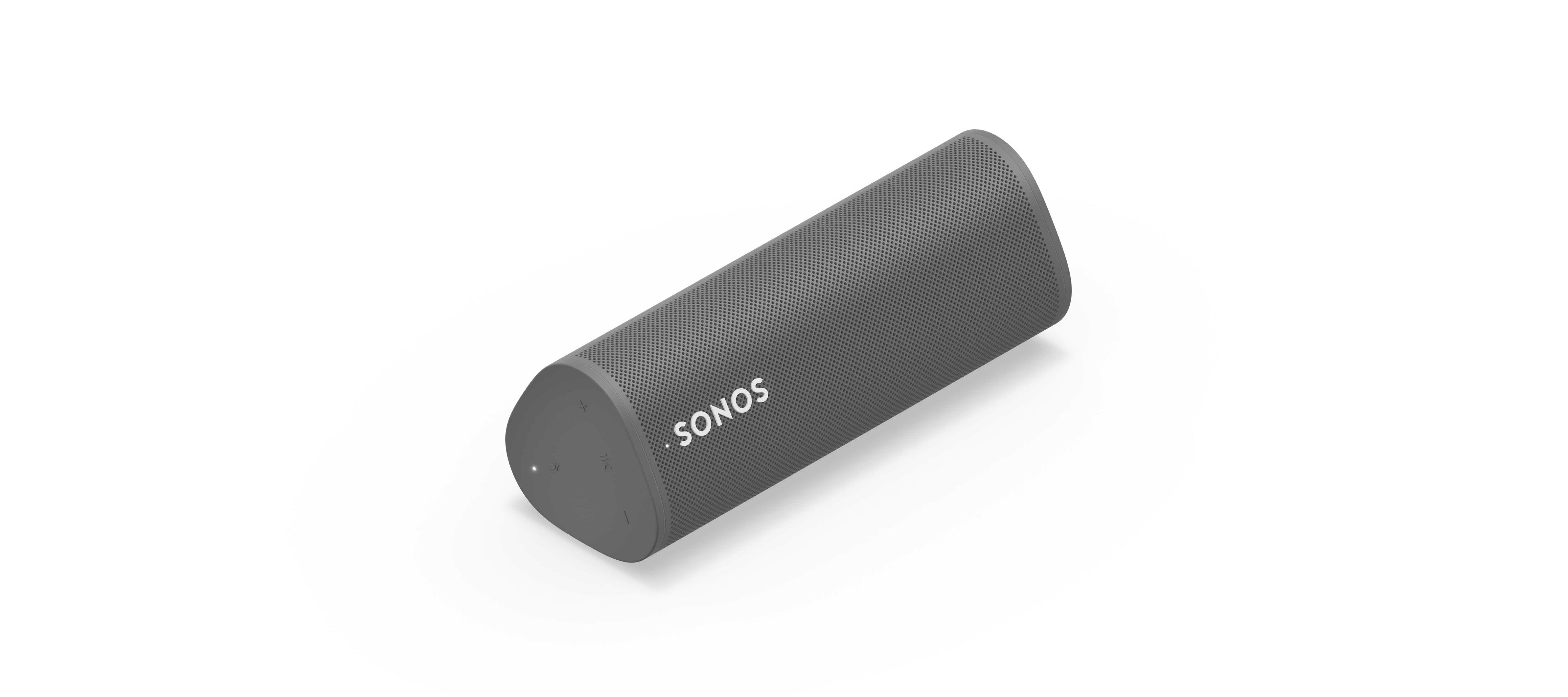
Meet Sonos Roam, the ultra-portable smart speaker
We’re happy to introduce you all to Sonos Roam, the ultra-portable smart speaker built to deliver great sound at home and on any adventure. Fully connected to your Sonos system on WiFi at home and automatically switching to Bluetooth when you’re on the go, Roam’s powerful, adaptable sound defies expectations for a speaker of its size. Effortless set-up and control and new smart features make it easier than ever to enjoy music and more from anywhere. Weighing less than a pound (450g), Roam’s elegant yet durable design is perfect for your home, the backyard, and wherever you go.Get to know Sonos RoamA simultaneous connection to both WiFi and Bluetooth makes streaming wherever you are seamless. When you’re listening at home Roam connects to your system and streams on WiFi, and when you leave it intuitively switches to Bluetooth and automatically re-pairs with your mobile device. With an all-new feature called Sound Swap, you can hold the play/pause button on the speaker to switch the music to the nearest speaker on your system, making it easy to move music from room-to-room.Sonos Roam (left) and Sonos Move (right)Seamless connectivity also unlocks Bluetooth streaming for your entire system, with the Sonos app allowing you to group any of your Sonos speakers to Roam when streaming with Bluetooth. Roam works with more than 100 streaming services, including Sonos Radio, and is easily controlled with the Sonos app, your voice with Amazon Alexa or Google Assistant, Apple AirPlay 2, or directly from your favorite music service app.Roam was created to deliver an incredible sound experience no matter where you are. Like all Sonos products, Roam was tuned by industry leaders across music and film to ensure the speaker reproduces content exactly how the creator intended. A carefully designed acoustic architecture delivers rich, detailed sound with the clarity, depth, and fullness you’d expect from a larger speaker. Automatic Trueplay is now available when streaming via Bluetooth as well as Wi-Fi, and means Roam is always tuned for the best listening experience in any environment.Available in shadow black or lunar white, Roam’s tactile triangular shape and soft profile is comfortable to pick up and looks great inside the home. Combining elegance and durability, Roam is dust proof and fully waterproof with a rigorously tested IP67 rating, and features silicone end caps and physical buttons to protect against drops or bumps. Roam is ready for any adventure with up to 10 hours of continuous playback on a single charge and up to 10 days of battery life when not in use.To recharge, Roam connects to a custom magnetic wireless charger from Sonos sold separately, any Qi wireless charger, or with the USB-C cable included in the box. Sonos RoamRoam’s compact size will fit into any bag or the smallest corner of your living space. Listeners can place Roam vertically for a smaller footprint or horizontally to provide added stability on uneven surfaces outdoors. Even the packaging leaves a light footprint, with a structure that is made of 100% sustainably-sourced paper, minimizes the use of inks, and includes no single-use plastics. Roam is available starting April 20 for $169, €179, £159, NOK1799, SEK1999, DKK1349. You can pre-order today on sonos.com.
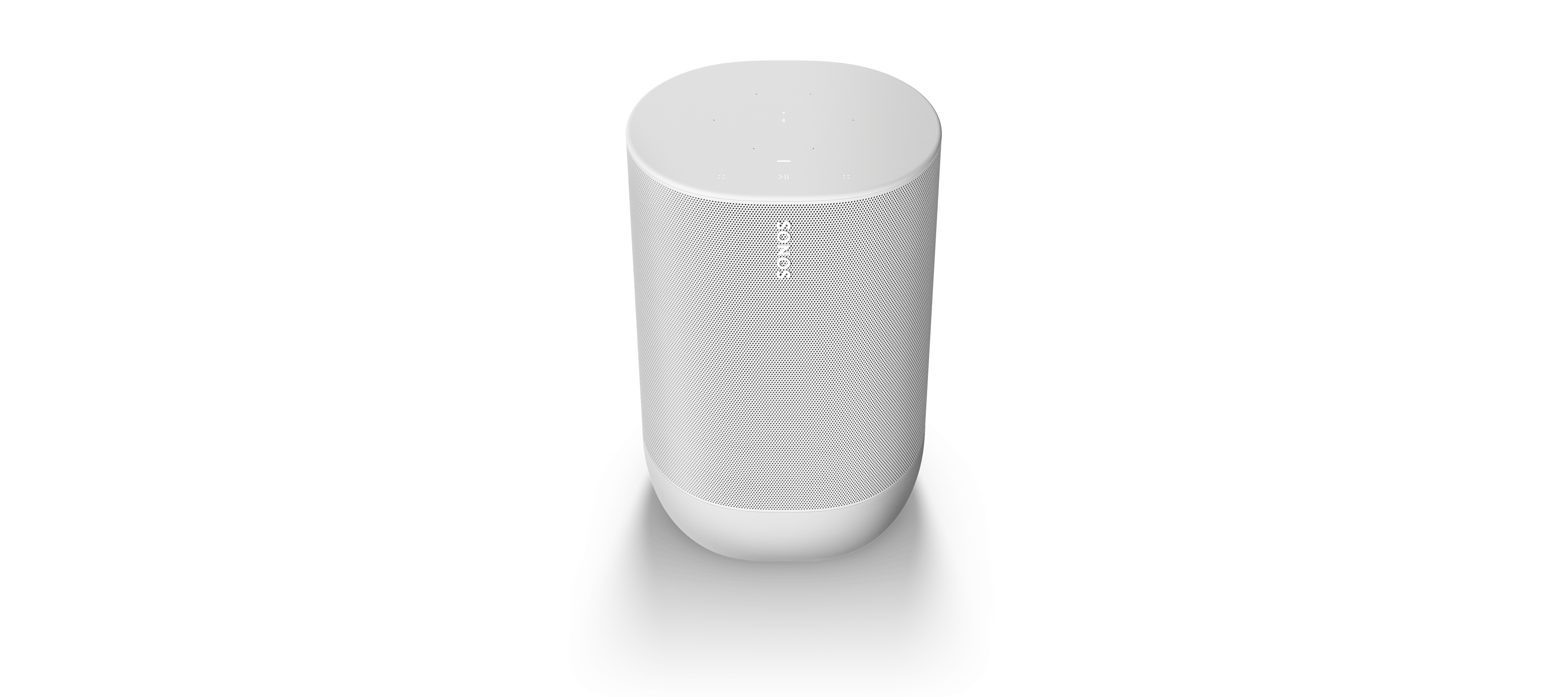
Introducing Move in Lunar White
Last September, we introduced Sonos Move, the durable, battery-powered smart speaker for outdoor and indoor listening. Today, we introduce a new color for Move: Lunar White. The hue represents months of research, formulating, and testing. It also exemplifies a key tenant of the Sonos experience—that all our products work together as part of a system not only technically but also aesthetically. If you’re new to Move, read all about it here and check out our blog post on the Making of Move. Pre-order today on Sonos.com for $399 US (€399 EUR), available in the Americas and China on June 30th, with worldwide availability starting July 7th.
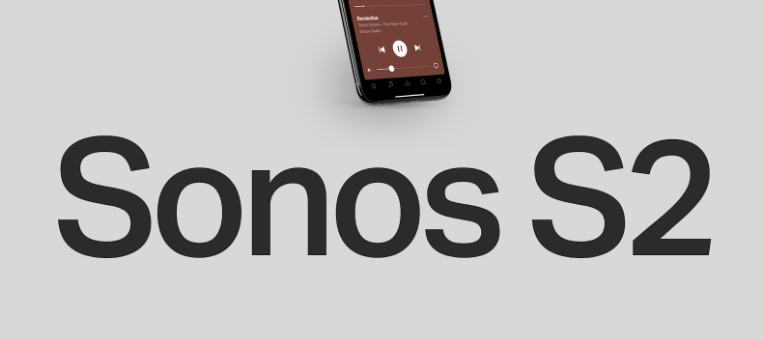
Introducing S2, New App and OS for Sonos
The next generation of Sonos software is now available. Sonos S2 is a new app and an operating system for compatible devices, which brings support for higher resolution audio, saved groups, support for new Sonos products, and more.Learn more about the Sonos S2 app on our S2 home page. Support for the newest Sonos productsThe all new Sonos Arc, Sonos Five, and Sonos Sub will require the Sonos S2 app. These new players are not supported by the Sonos S1 Controller. Saved GroupsThe new S2 app can save groups of rooms to create groups quickly and easily. Once a group is created, you can select it to start playing music and the players will automatically group up. High Resolution Audio With S2, Sonos speakers now have support for high resolution audio, 24-bit, 44.1/48kHz for FLAC/ALAC only. This support is for local music libraries shared from computers and network attached drives. We’ve updated the article on Sonos supported music formats here.The Sonos Arc is a Dolby Atmos soundbar, and S2 brings support for that audio to Sonos for home theater and music. Dolby Atmos can be read from Dolby Digital Plus, Dolby MAT, and Dolby TrueHD. How to get S2All Sonos systems will be able to update to Sonos version 11.2, which contains some bug fixes and stability improvements. This version is a new S1 update, and compatible with all players. Once the 11.2 update is completed, systems compatible with Sonos S2 will receive a notification that the new app is available. You can tap that notification to start updating and the new app which will guide you through updating compatible players to the new platform. If you don’t see the notification banner, you go to System Tools in Settings to check compatibility and update. Sonos S2 is Sonos version 12.0.You can check our Sonos S2 Compatibility article for a list of products that are compatible with S2. Articles and important information about S2We will support products on Sonos S1 with bug fixes and security patches, and we will do what we can to ensure they keep working with the music services you love given their limited RAM and processing power.We’ve put together answers to some of the top questions we’ve seen around S2 here, so please check out the following articles on:Sonos S2 Overview - A great starting place to learn more about S2.Sonos S2 Compatibility - Information about the differences between Sonos S2 and S1, including which Sonos products are compatible.Set up separate S1 and S2 systems - Learn how to set up a separate Sonos S1 system with Sonos products that are not compatible with S2.Known limitations with separate S1 and S2 Sonos systems - This article covers what you can expect when using two separate S1 and S2 systems.Set up a separate Sonos S1 systemRemove Sonos products that are not compatible with S2 - Instructions on how to use the product removal tool in the Sonos S1 Controller before updating to Sonos S2.Information about Trade Up:If you’re interested in updating older Sonos speakers, here’s all the details on our Trade Up program, a way to get a big discount on any new Sonos products that are S2 compatible.Trade Up home page - Get a general overview of the Sonos Trade Up program.Trade Up support article - Step by step instructions on how to trade up your eligible Sonos products.
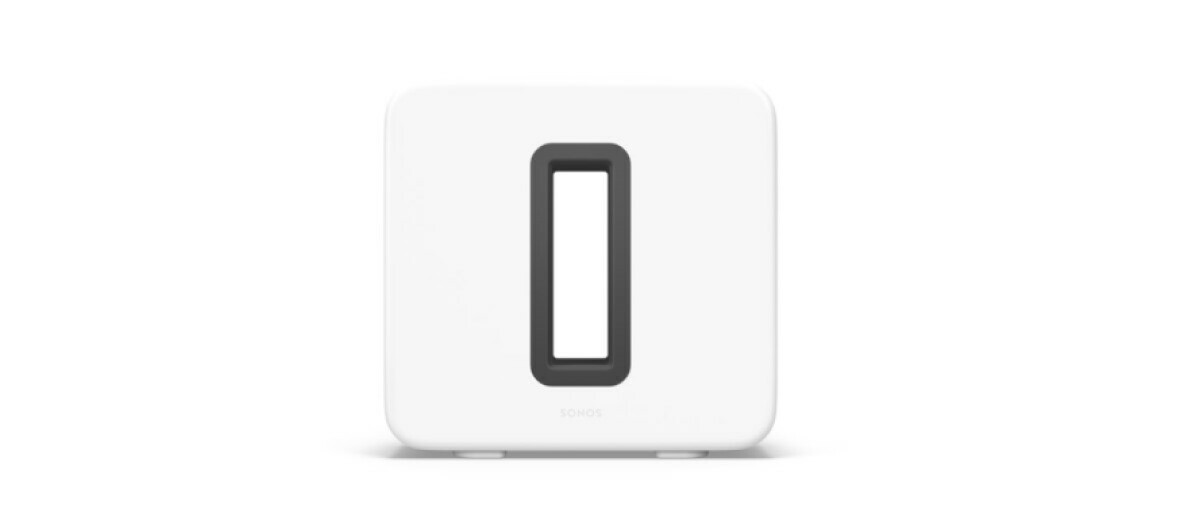
Introducing Sonos Sub Gen 3, brilliant sound you can feel
Available on June 10th, Sonos Sub is being masterfully engineered with its third generation. We’re enhancing the same iconic design and bold bass with updated internals including increased memory, processing power, and a new wireless radio. Hear and feel the difference with Sub, the wireless subwoofer for deep bass. Experience lower lows and higher highs when you connect Sub to your Sonos system over WiFi. Place the award-winning design upright or lay it on its side and enjoy pure bass with no vibration or rattle. No buzz, just bass Sonos Sub features two force-canceling drivers at the center to eliminate vibration and rattle so you get powerful bass without any distortion. It brings the same great sound as the previous Sub, with updated internals including increased memory, processing power, and a new wireless radio. The custom-designed drivers take over the lowest frequencies for the Sonos speaker or home theater setup that Sub is bonded with, freeing up the speaker for higher highs, while the Sub handles all of the lowest lows. Connect Sub to Arc or Beam, and enjoy TV, movies, and video games like never before. Add a pair of One SL surrounds for an even more immersive home theater experience. Some more details on Sonos Sub gen 3: Simple to set-up. Plug Sub into power and bring your phone up to Sub to automatically pair and securely transfer WiFi credentials using near-field communication (NFC). Flexible Orientation. Sub’s enduring design continues to fit perfectly into any space. Stand Sub upright, lay it on its side, or tuck it under the couch without any loss in sound performance. Bold Bass. Frequency response plays as low as 25 Hz. Tune with Trueplay. Trueplay puts the speaker-tuning capability of the pros in the palm of your hands, adapting and optimizing the sound of the speaker to the unique acoustics of the room. iOS device required. Dimensions. The dimensions are (H x W x D)15.3 x 6.2 x 15.8 inches (389 x 158 x 402 mm) and Sub weighs 36.3 lb (16 kg). Pre-order today on Sonos.com in glossy black or white for $699 US (€799 EUR). We’ve announced details for the Sonos Arc and Sonos Five. You can also check out our blog for some great stories.
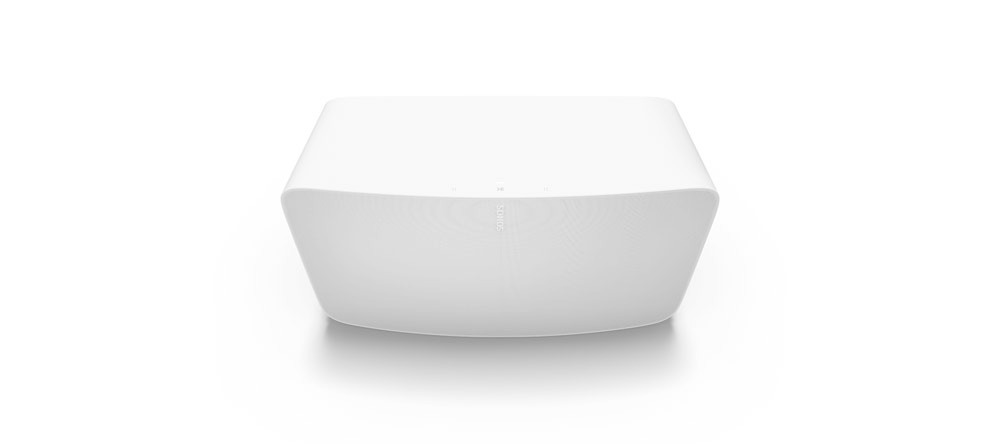
Meet Sonos Five, studio-quality sound
Available on June 10th, Sonos Five is our most powerful speaker for music and more in high-fidelity sound. Enjoy seamless control with the all-new Sonos app, Apple AirPlay 2, music service apps, and more. Studio quality sound Sonos Five delivers the same great sound as the Play:5, with updated internals including increased memory, processing power, and a new wireless radio. Six Class-D digital amplifiers are perfectly tuned for Five’s acoustic architecture to power the three tweeters and three mid-woofers. The custom-designed woofers deliver rich bass while the sealed architecture eliminates reverb and echo. This ensures faithful playback of vocal frequencies in addition to rich bass without distortion, even at high volumes. One center tweeter and two precisely-angled side tweeters create a crisp high-frequency response. This all creates a wide stereo soundstage that directs sound to the left, right, and center from one compact speaker. You can amplify the experience by adding another Sonos Five as a stereo pair in either vertical or horizontal orientations, or bring it to the next level with a Sonos Sub. Some more details on Sonos Five: Simple to set-up. Plug Five into power and bring your phone up to Five to automatically pair and securely transfer WiFi credentials using near-field communication (NFC). Analogue line-in. With 3.5 mm jack for connecting another device, bring sound to Sonos from anything with a standard audio connection. Flexible Orientation. Enjoy great sound with a standalone Sonos Five horizontally, or pair two Fives in the upright position for incredibly detailed stereo separation. A pair of Fives can also be used as surrounds for a Sonos home theater speaker. Control your way. Control Sonos Five with your voice when paired with a voice enabled device, the Sonos app, your favorite music service’s app, or AirPlay 2. Capacitive touch controls for play, pause, skip tracks, adjust the volume, and group rooms just by tapping or swiping the top of the speaker. LED indicates status, and mute status. Tune with Trueplay. Trueplay puts the speaker-tuning capability of the pros in the palm of your hands, adapting and optimizing the sound of the speaker to the unique acoustics of the room. iOS device required. Dimensions. The dimensions are (H x W x D) 8.03 x 14.33 x 6.06 inches (203 x 364 x 154 mm) and Five weighs 14 lbs (6.36 kg). Pre-order today on Sonos.com in black with a black grille and, for the first time, white with a white grille for $499 US (€579 EUR). We’ve announced details for the Sonos Arc and new Sonos Sub. You can also check out our blog for some great stories.
Filter
- All News
- Community News
- Hardware News
- Partner News
- Service News
- Software News
- Sonos News
Enter your E-mail address. We'll send you an e-mail with instructions to reset your password.
Scanning file for viruses.
Sorry, we're still checking this file's contents to make sure it's safe to download. Please try again in a few minutes.
OKThis file cannot be downloaded
Sorry, our virus scanner detected that this file isn't safe to download.
OK